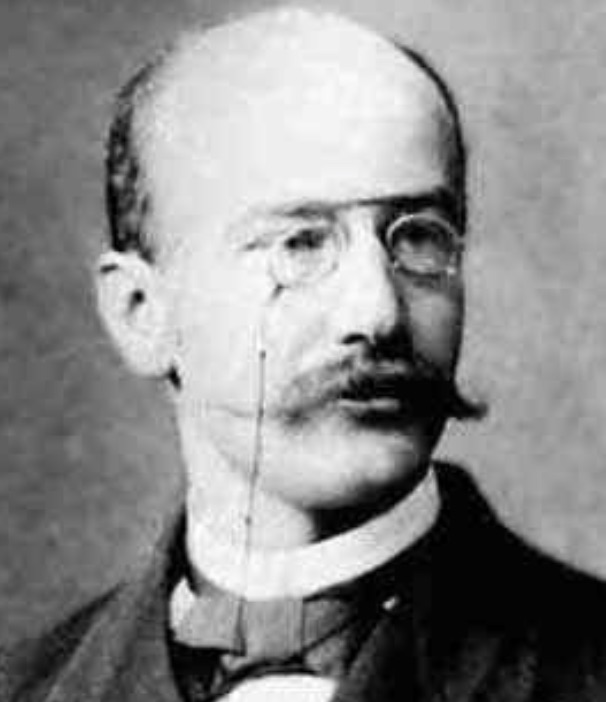
Carl Louis Ferdinand von Lindemann was born on April 12, 1852 in Hanover, Germany. He received his early education in Schwerin where his father was the director of the gasworks. At age 18, Ferdinand graduated from high school and enrolled at the University of Göttingen where co-founder of the journal Mathematische Annalen, Alfred Clebsch, taught him non–Euclidean geometry.
In 1873, Ferdinand earned his Ph.D. at the University of Erlangan under the supervision of Felix Klein for his thesis on non-Euclidean geometry. It was in this same year that the French mathematician Charles Hermite proved that e (the base of natural logarithms) is a transcendental number. That is, e cannot be the root of any algebraic equation with integral coefficients. Seeking to expand his mathematical horizons, Lindemann traveled to England and France, where he met some of the leading mathematicians in those centers, including Hermite.
During his meeting with Hermite, Lindemann explored the methods that the French mathematician had used to prove e is transcendental. Nine years later, in 1882, Lindemann combined the techniques of Hermite and the identity e i π = -1 to prove that π is transcendental. This was a monumental discovery, because it proved once and for all, that a square of area π could not be constructed with ruler and compasses. This had been an unresolved problem since the time of the ancient Greeks.
The following year, Lindemann took a professorship at the University of Königsberg where he supervised more than 60 Ph.D. students, including David Hilbert, and Hermann Minkowski. In 1893, he became the Chair of Mathematics at the University of Munich where he remained until his retirement. He died on March 6, 1939 in his 87th year.
Ferdinand von Lindemann has been described by some historians of mathematics as somewhat formal and austere in the style of the Prussian mathematicians of his day. In Too Big for a Single Mind, author Tobias Hürter tells the story of the young Werner Heisenberg at age 18, seeking advice from Lindemann about pursuing a career in mathematics. Hürter writes:
Lindemann asks Heisenberg what books he has been studying lately. … Heisenberg tells the professor of his excitement at reading the book Space, Time, Matter by mathematician Herman Weyl, on the general theory of relativity. “A physics book! Then you are already ruined for mathematics ,” says Lindemann, and promptly ends their interview. An eighteeen-year-old stripling with the audacity to debase mathematics by applying it to the perceivable world is, in his view, unworthy of his support.
Heisenberg went on to study physics and became one of the giants in quantum physics.
